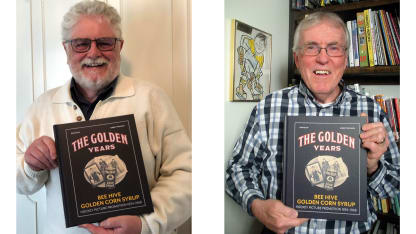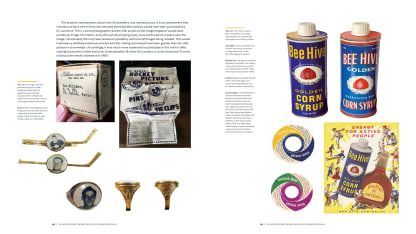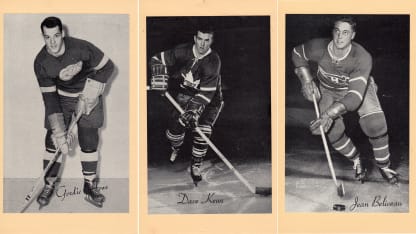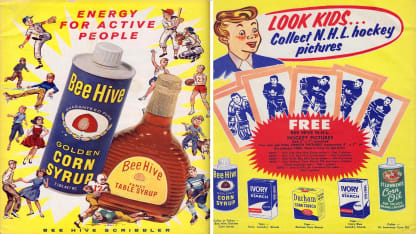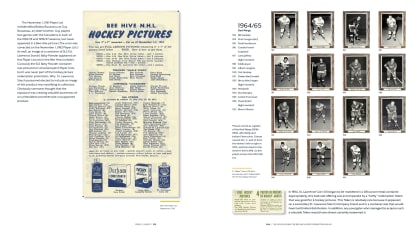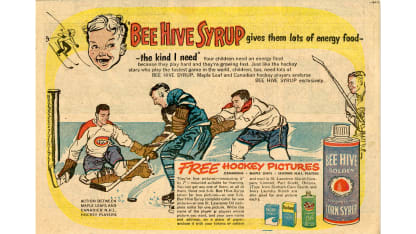Bee Hive tie clip and ring premiums, introduced in 1949 (left) and 1950s and '60s two-pound cans of the corn syrup, the cardboard collars atop each redeemable through the mail for hockey photos.
With traditional hockey cards appearing erratically from cigarette and chewing-gum companies in the 1930s and '40s, Bee Hives often were the only scrapbook-worthy photos a youngster could collect.
Three series or sets of Bee Hives were produced -- 1934-45, 1947-64 and 1964-68, the final series featuring a woodgrain border. The promotion, which was suspended between 1945-47 because of wartime restrictions, a corn shortage and then a strike, ended in the fall of 1967 upon the NHL expansion from six to 12 teams. Redemption mailings into the spring of 1968 included a letter explaining the demise was because of rising endorsement fees and the cost of photography, postage and administration. In all, 604 NHL players had been featured over 34 years.
At 4¼ by 6¾ inches, mounted on a larger color matte, every player's picture a vertical except for eight horizontals of goalies, the photos were a stroke of marketing genius for the St. Lawrence Starch Co., which produced Bee Hive and various corn oils and food and laundry starches for a century until it was bought in 1989 by U.S. interests.
Bee Hive became Canada's largest-selling corn syrup in the 1930s, its sales quadrupling during its photo promotion. At its peak, more than 2,500 photos were mailed daily from the St. Lawrence business office.
Getting a Bee Hive photo was a simple matter, if one that involved a stamp and a major sugar rush: a collar off the top of a two-pound can -- which contained almost 4,200 calories of liquid gold -- earned a single photo that you chose from a checklist of players; a token from a five-pound can, and its more than 10,000 calories, was worth two pictures.

